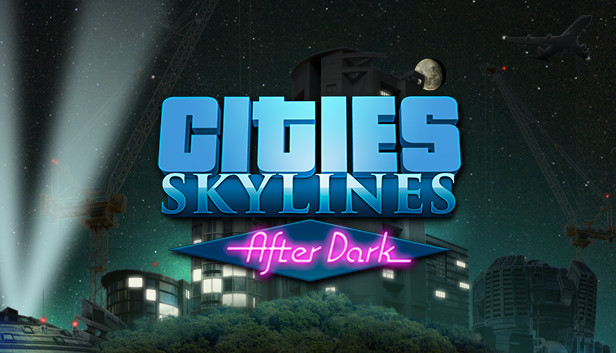

Leisure zones (new in After Dark), are more active at night, and taxis seem more popular, but aside from these very basic changes, little changes when the sun goes down. You can change how city services behave at night, for example shutting down some bus routes or only letting garbage trucks roam around in the daytime, but your citizens don't understand this and will complain when they see there aren't any bus routes near their home - even if it's night time and they don't need to go to work right now. Citizen behaviour only changes slightly at night, with buildings like schools still lit up even at the dead of night and students milling around in the playground. The addition of an optional day/night cycle in After Dark compounds these problems, revealing many shortcomings in the underlying game engine. Emergency vehicles get stuck in traffic with everybody else, as do garbage trucks and hearses, so the problems caused by vehicle behaviour aren't just cosmetic: they're game-breaking. Traffic jams cause huge problems for your services and citizens. ^ From high up or at street level, Cities Skylines looks great To an extent this will be down to poor city design, but the lack of a lane editor (where adding a second left-turn lane would be extremely handy) means that these problems are impossible to solve without creating huge, looping overpasses that, while impressive, quickly turn every major intersection in your city into a colossal mess.

If that left turn is particularly popular, you'll find you have a huge traffic jam in one lane, with the rest of the lanes completely clear.

If the next turn a vehicle will make is a left-turn, it will sit in the left lane, even if that left turn is kilometers away. Most of your problems will be caused by traffic flow sometimes it'll be down to your own lack of infrastructure knowledge (open up Google Maps and look at the design of streets in your local town to get an idea of how things work), but an awful lot of your traffic problems will be cause by idiotic AI behaviour. Lay roads (two-lanes, four lanes, six lanes and highways), create zones for specific types of buildings (residential, commercial, industry and offices) and plop down services (schools, parks, hospitals, garbage, etc), and you have the barebones of a city.įrom there, it's about expanding your city, dealing with issues as they arise. There aren't any planning regulations or green belts to worry about you just build what you want, where you want. Like most city builders, you're given a blank piece of land to do with what you wish.

I've personally sunk more than 100 hours into the game in that time, and while that speaks volumes about the game before I even get into my review, things aren't quite so simple. Half a year has passed, with the new After Dark expansion recently adding various new features. Fans of city-building games were so utterly desperate for something that truly embodied the spirit of 2003's SimCity 4, and with the disappointment of 2013's SimCity reboot still fresh in the mind, the only way to go was up. The original game has been around for six months now, with glowing reviews when it first arrived. Lesson learned.Ĭities: Skylines is all about screwing up, learning lessons and starting again. Garbage built up without me noticing and now everyone is dead. Doing that meant bin lorries couldn't drive down it to pick up the rubbish. Things were going swimmingly until I built a one-way street in the wrong direction. My virtual version isn't quite so attractive. It's overlooked by spectacular mountains and filled with quaint holiday apartments, Irish theme pubs and gift shops. The town of Banff, Alberta, Canada, is a bustling little holiday destination, perfect for hikers in the summer months and skiers in the winter.


 0 kommentar(er)
0 kommentar(er)
